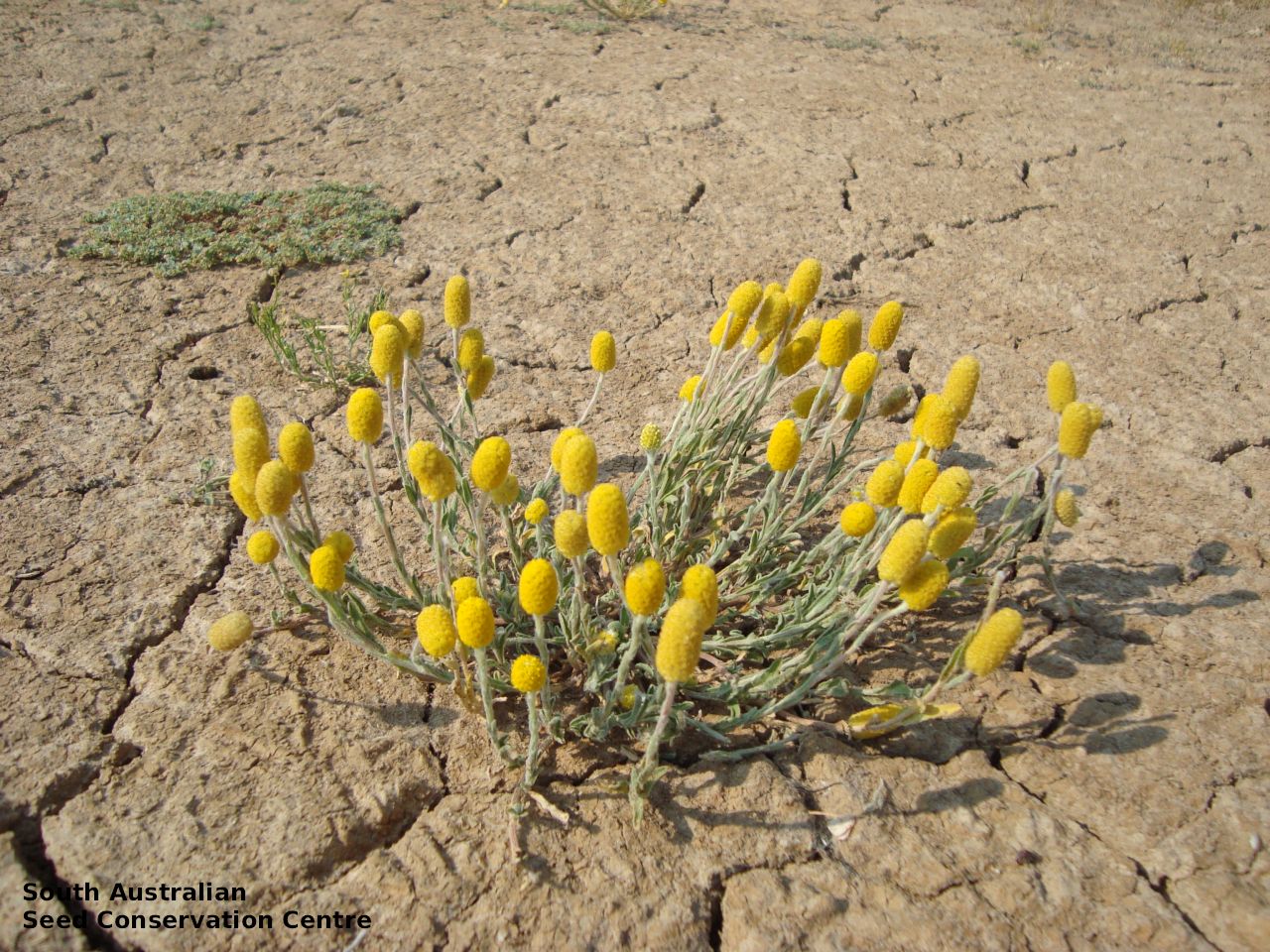
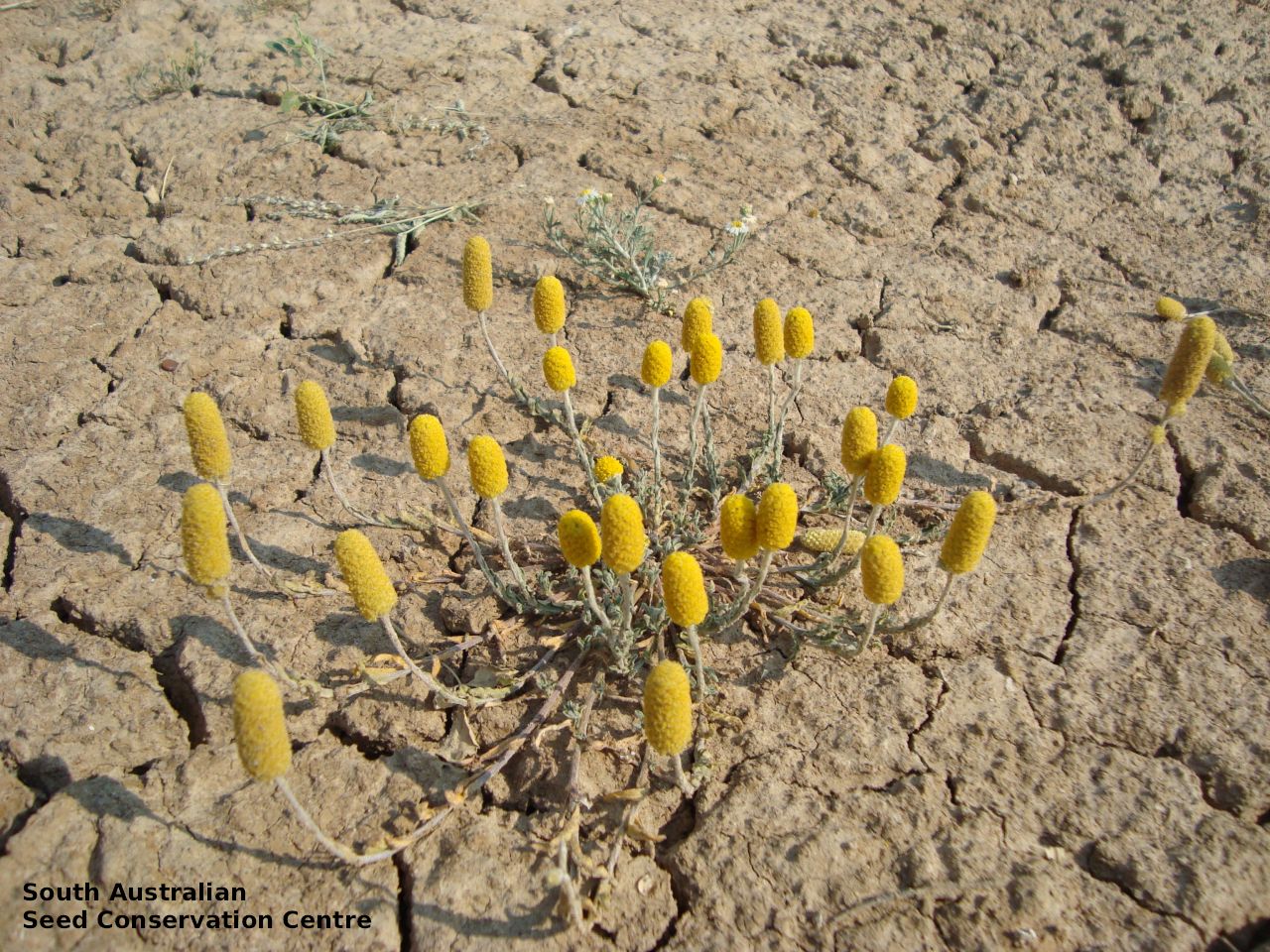
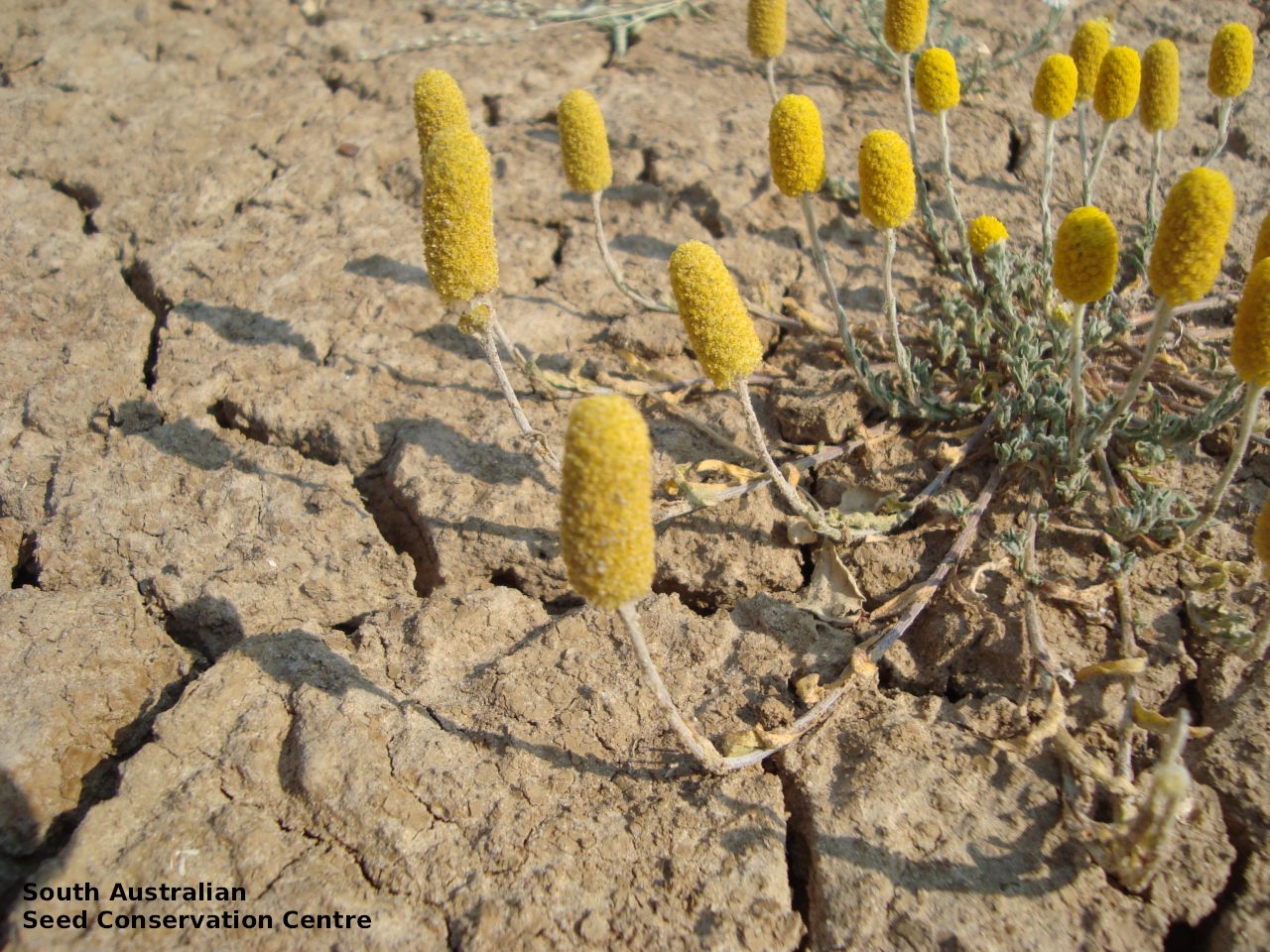
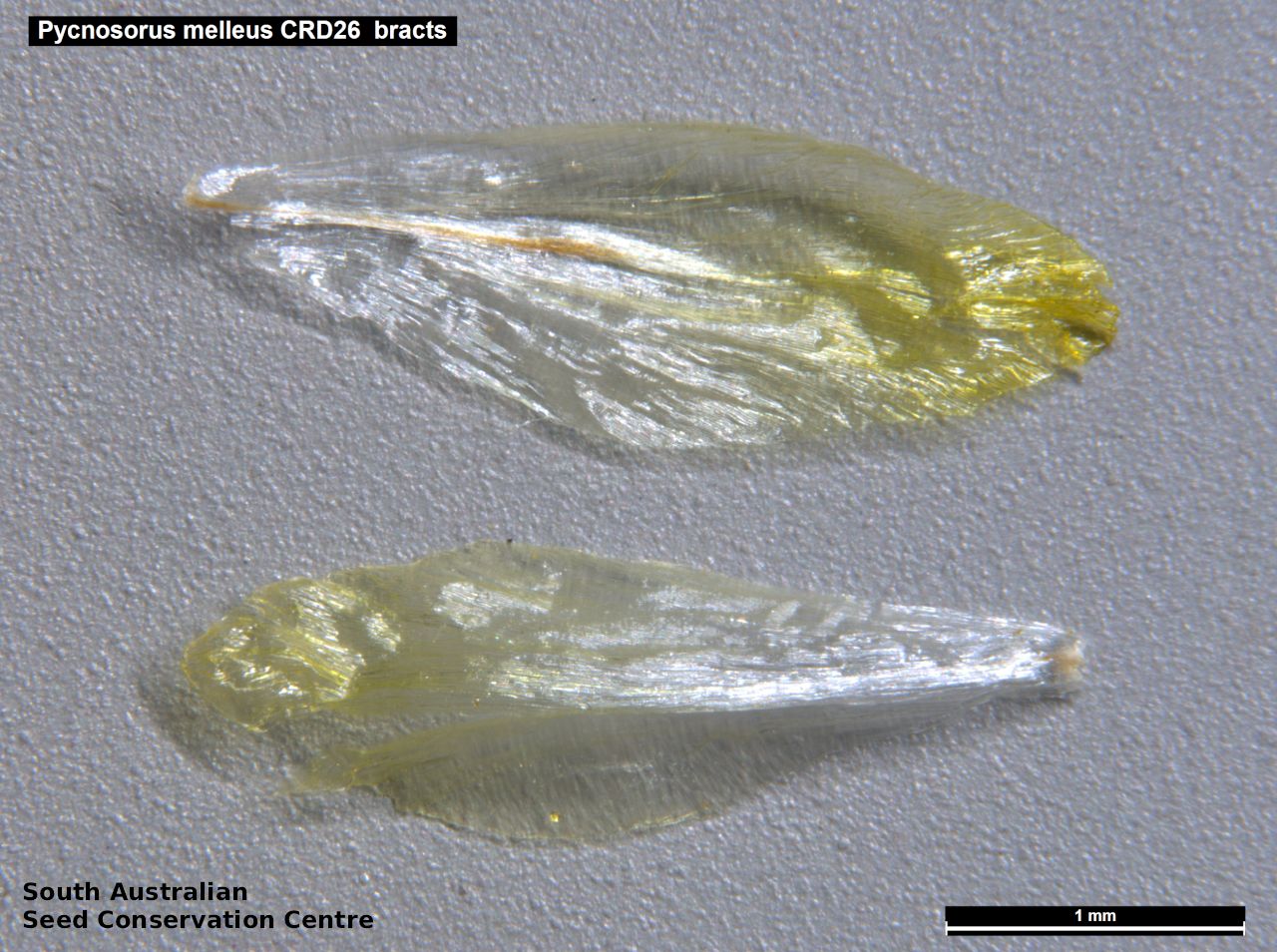
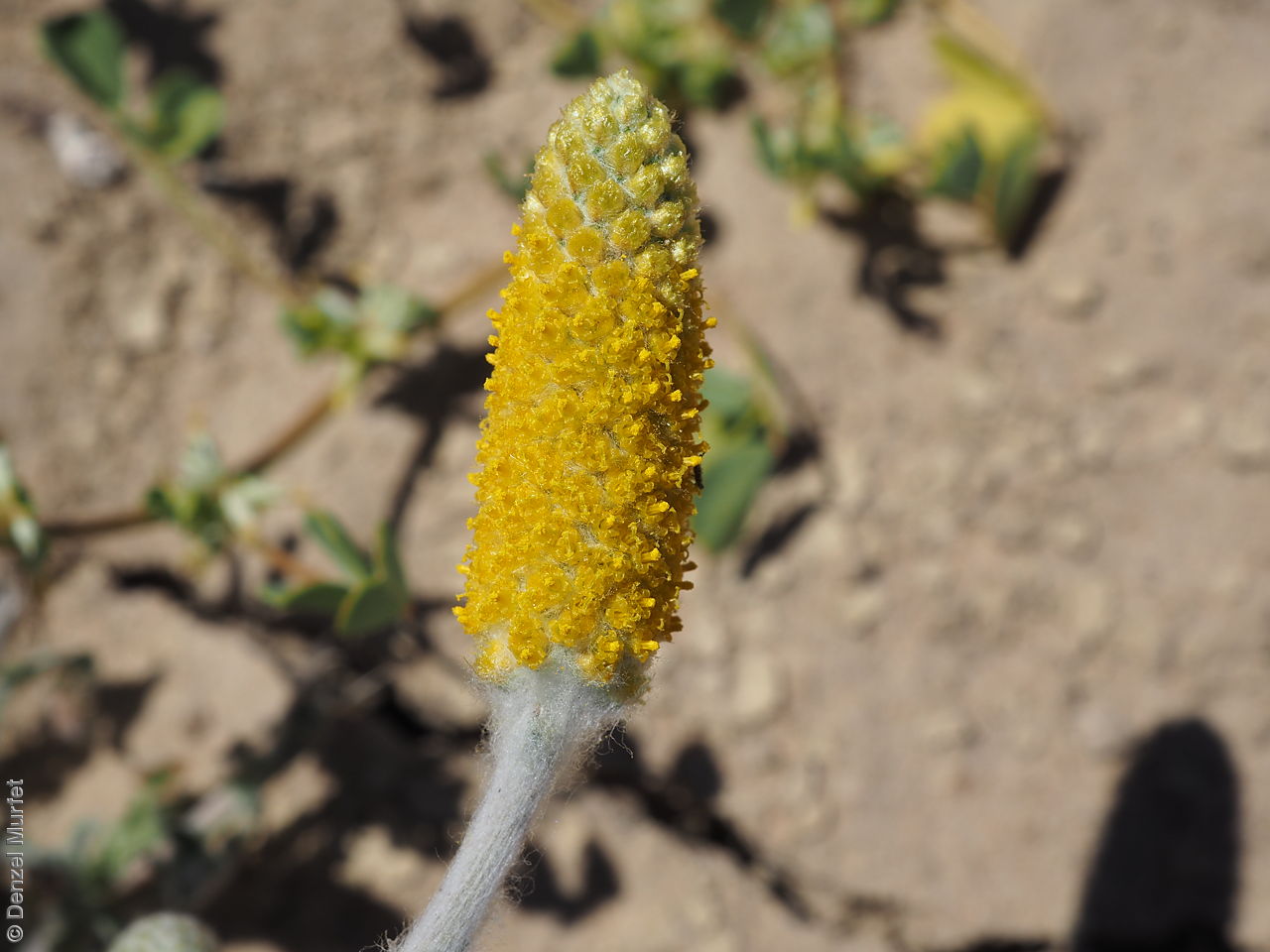
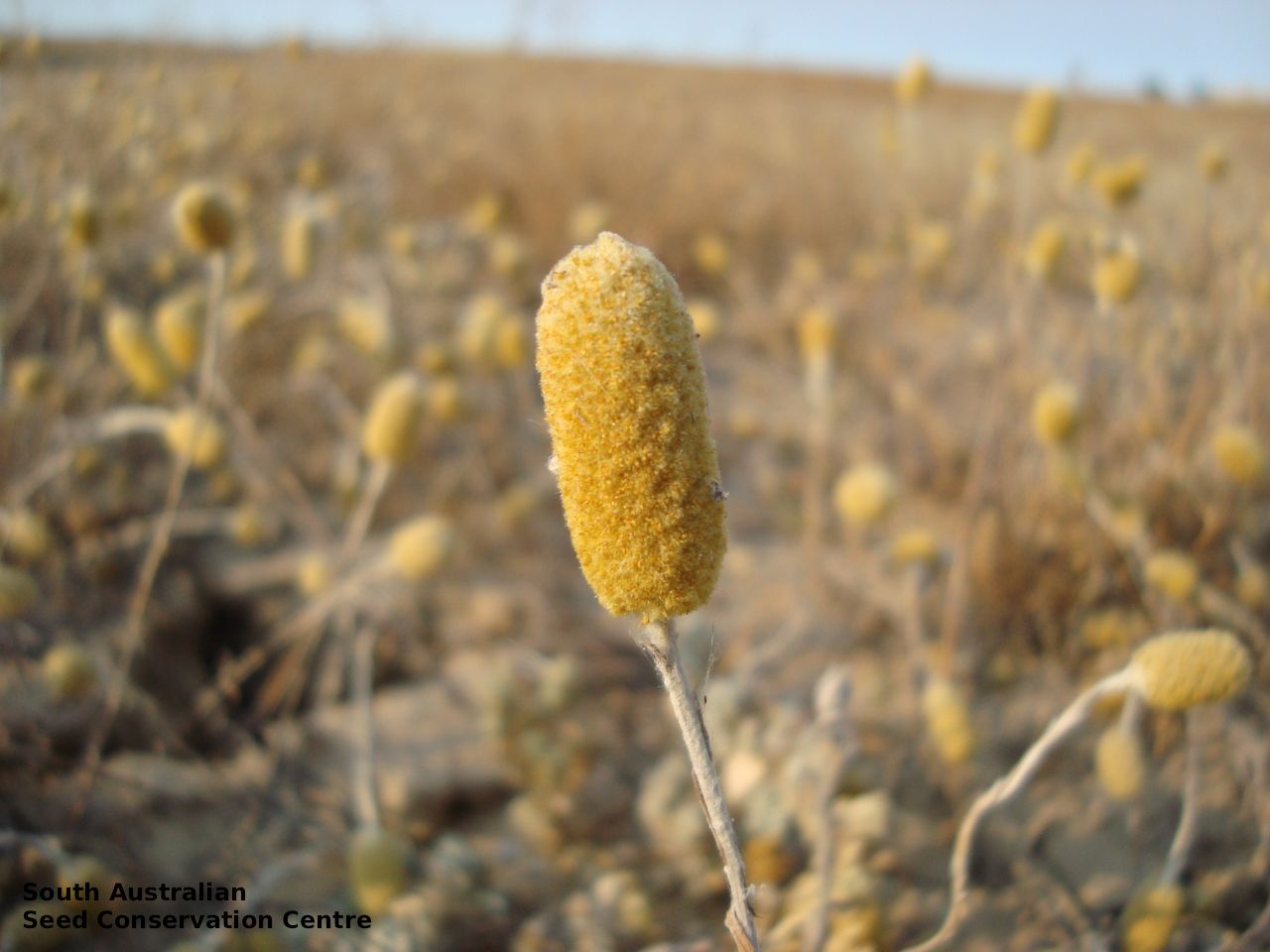
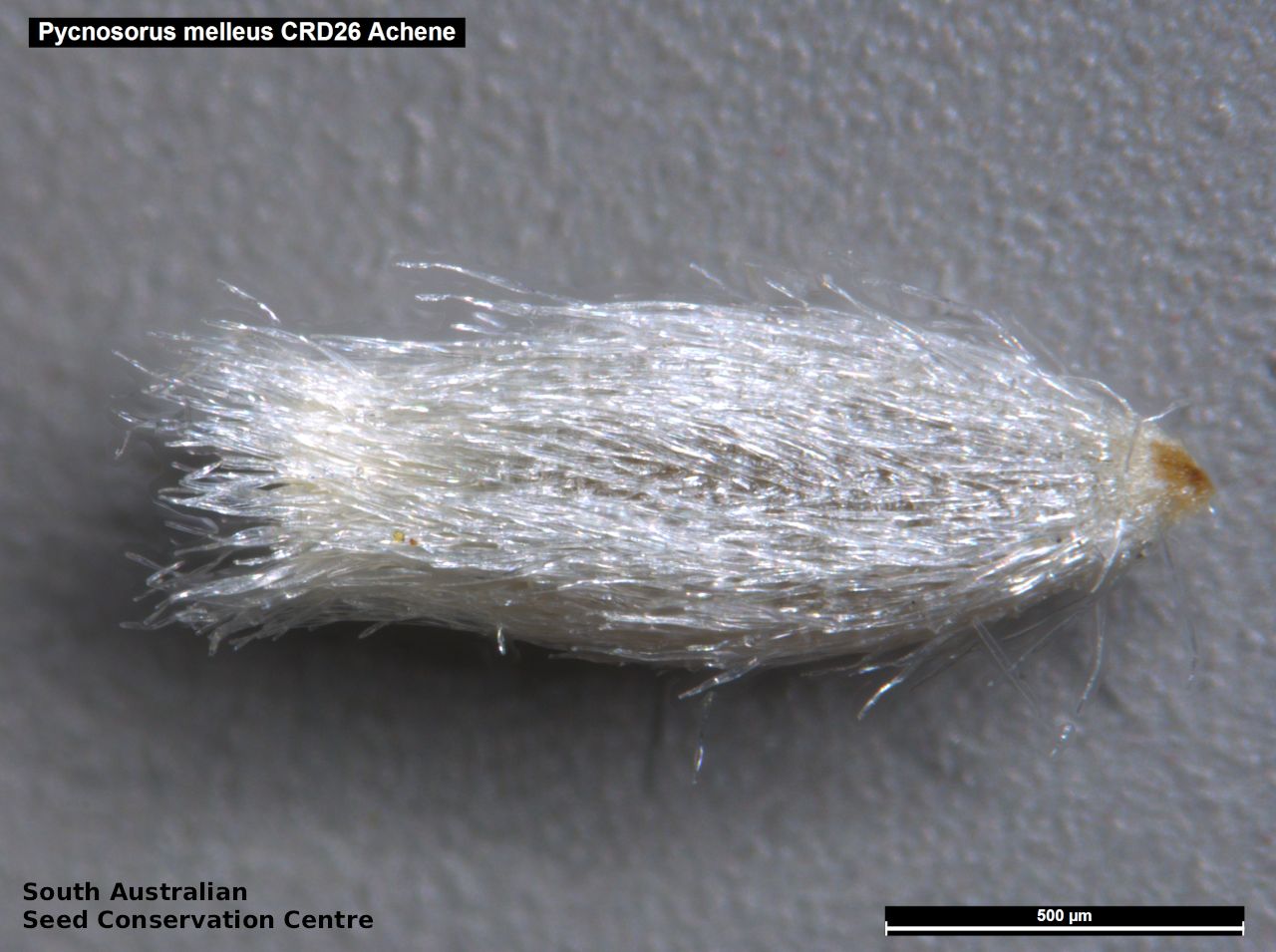
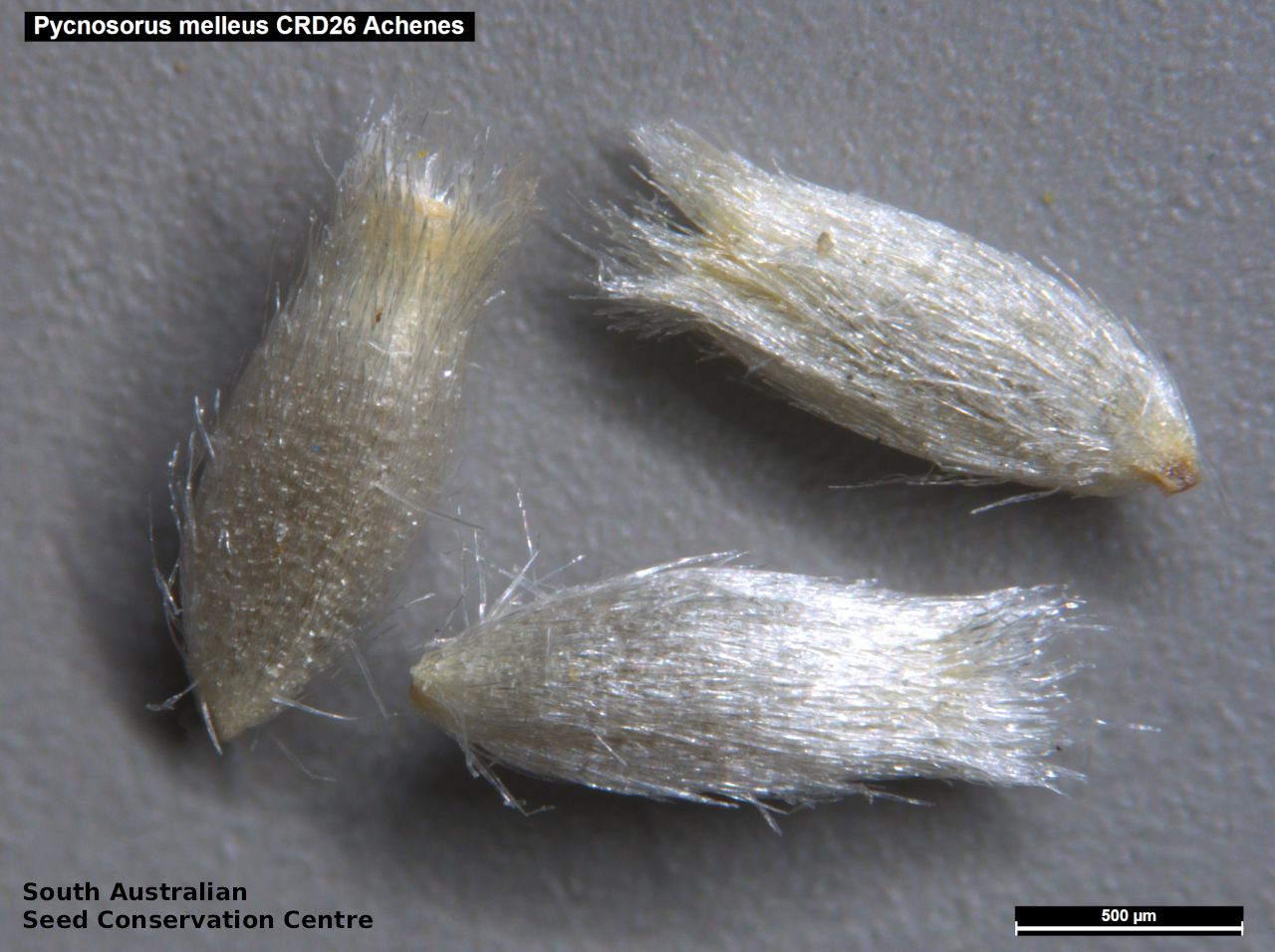
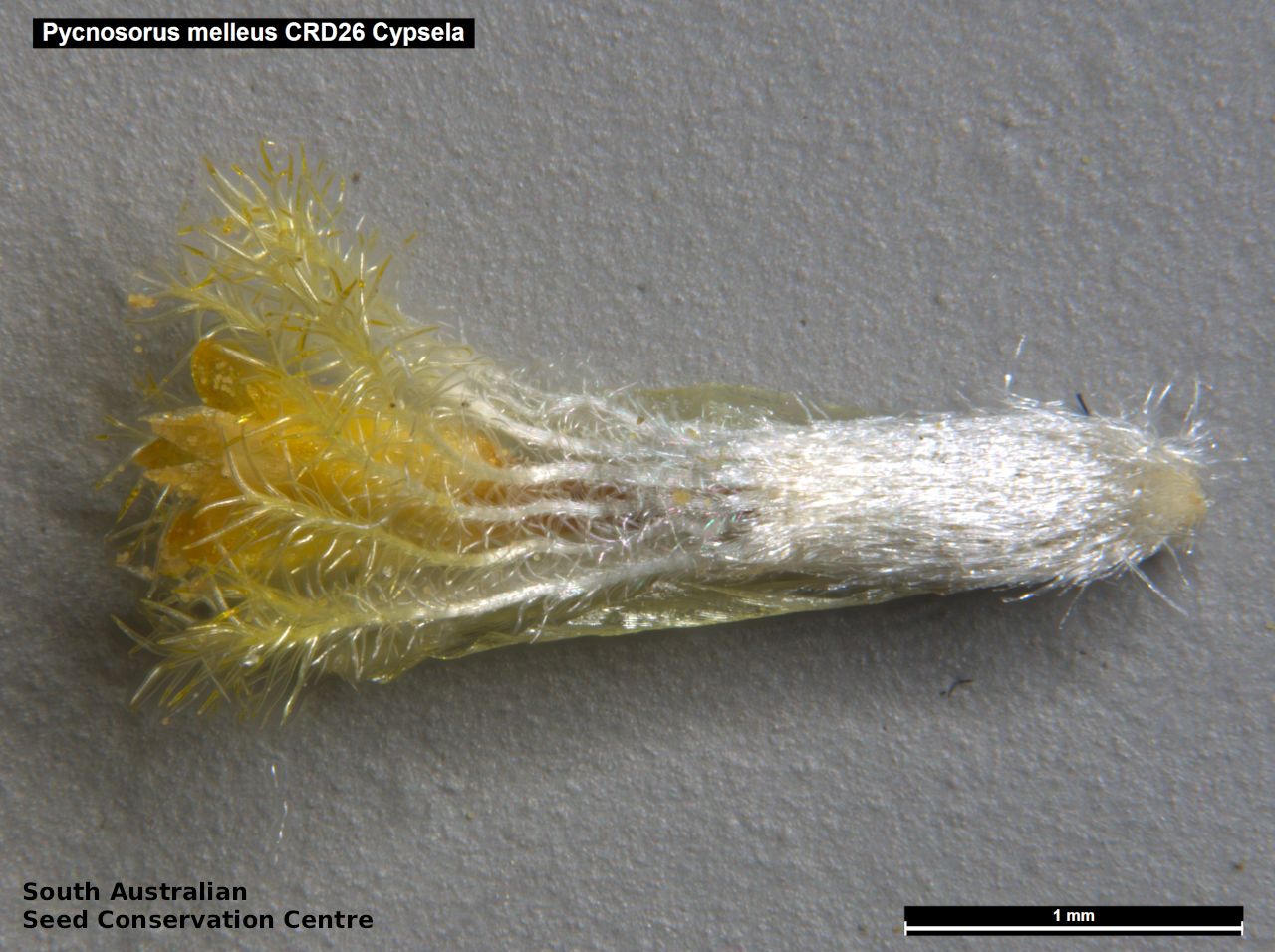
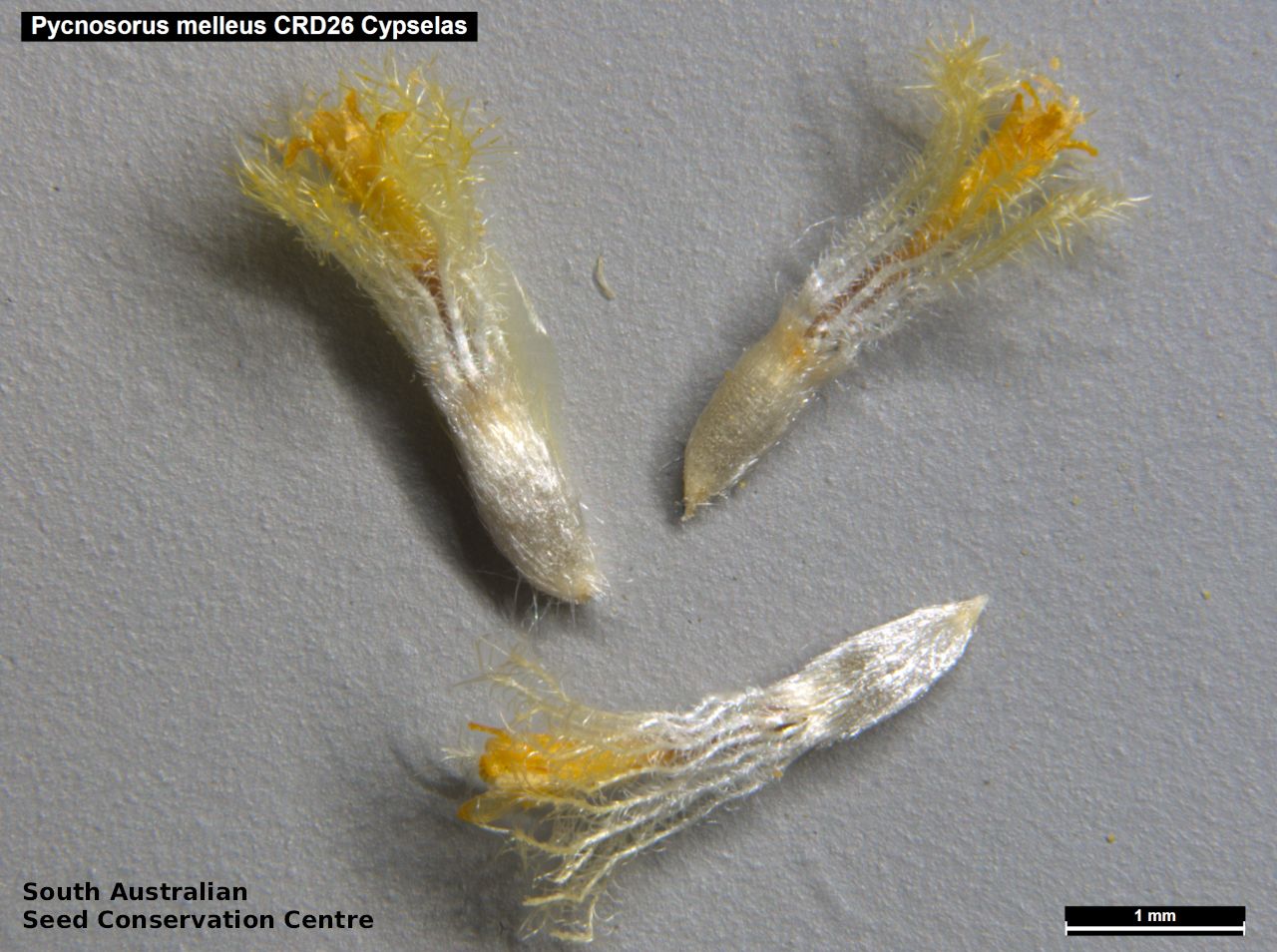
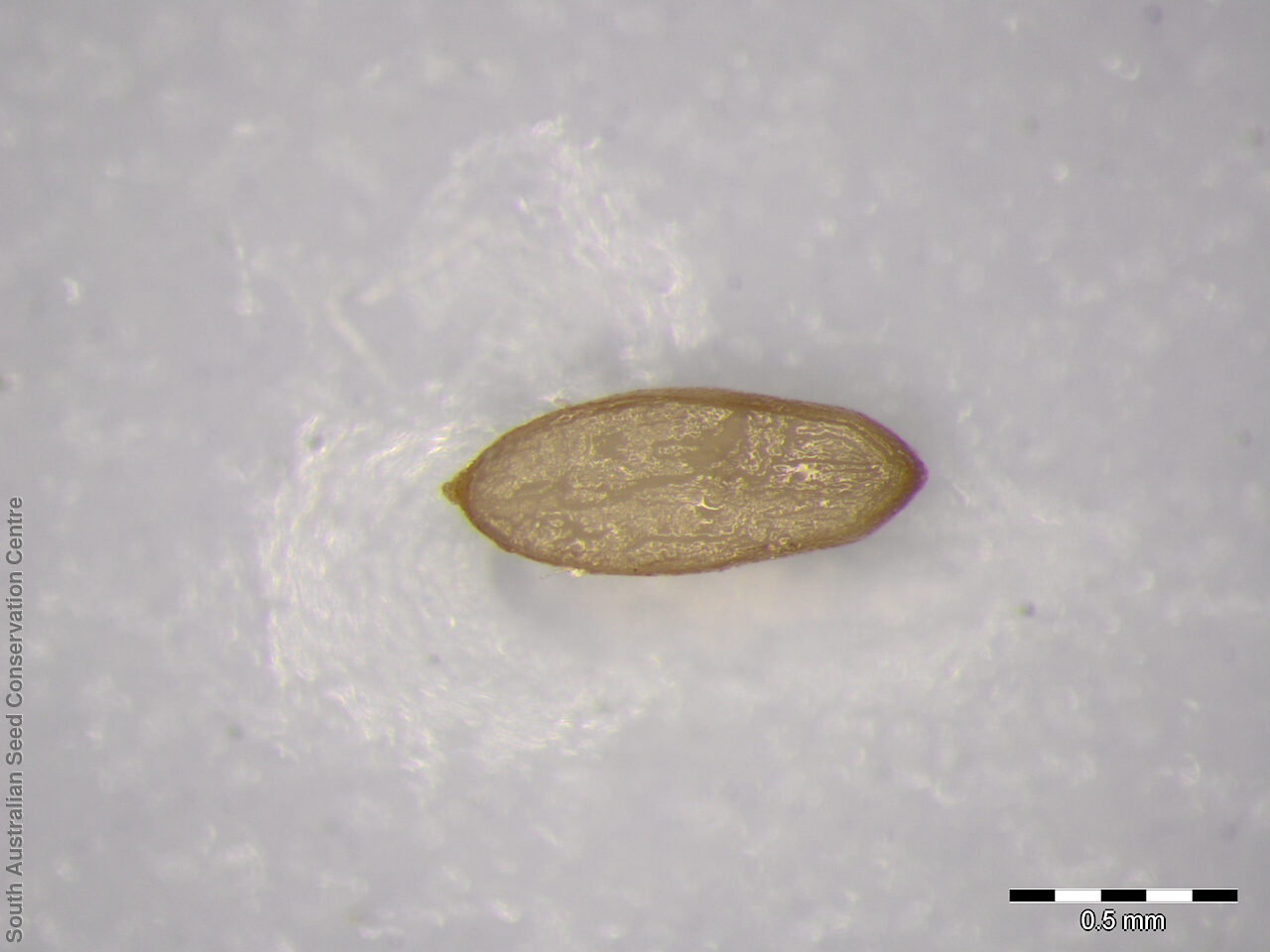
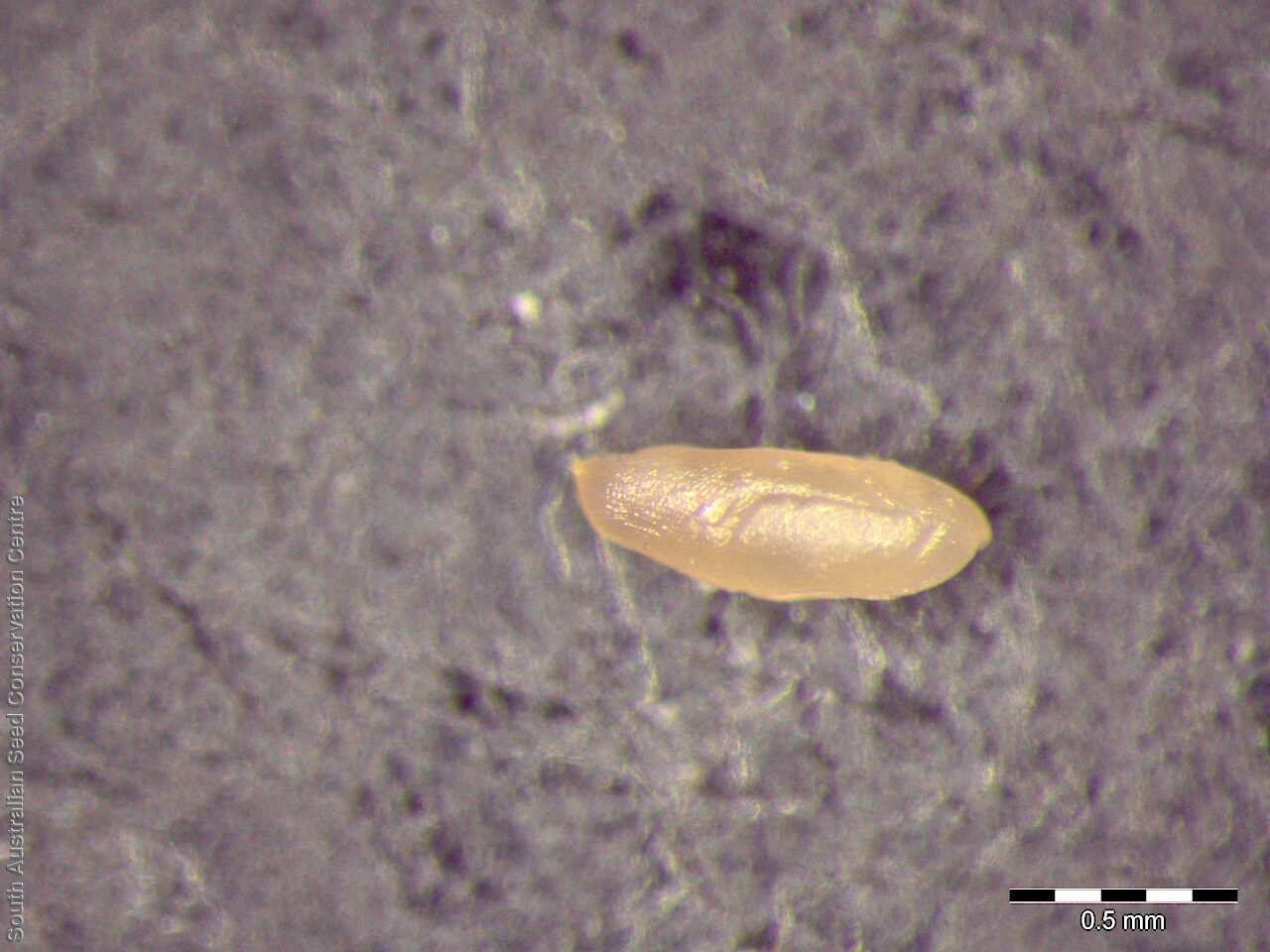
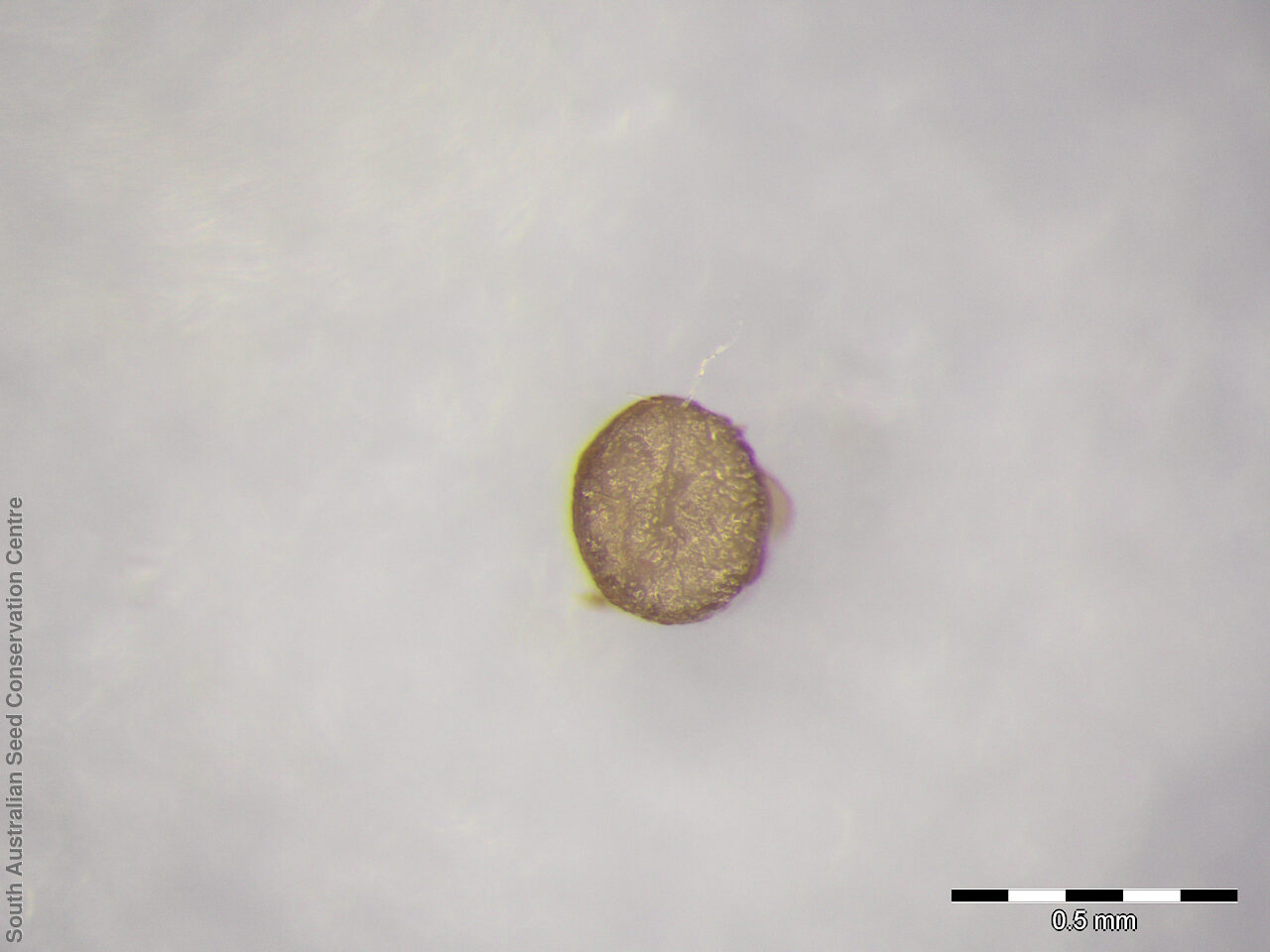

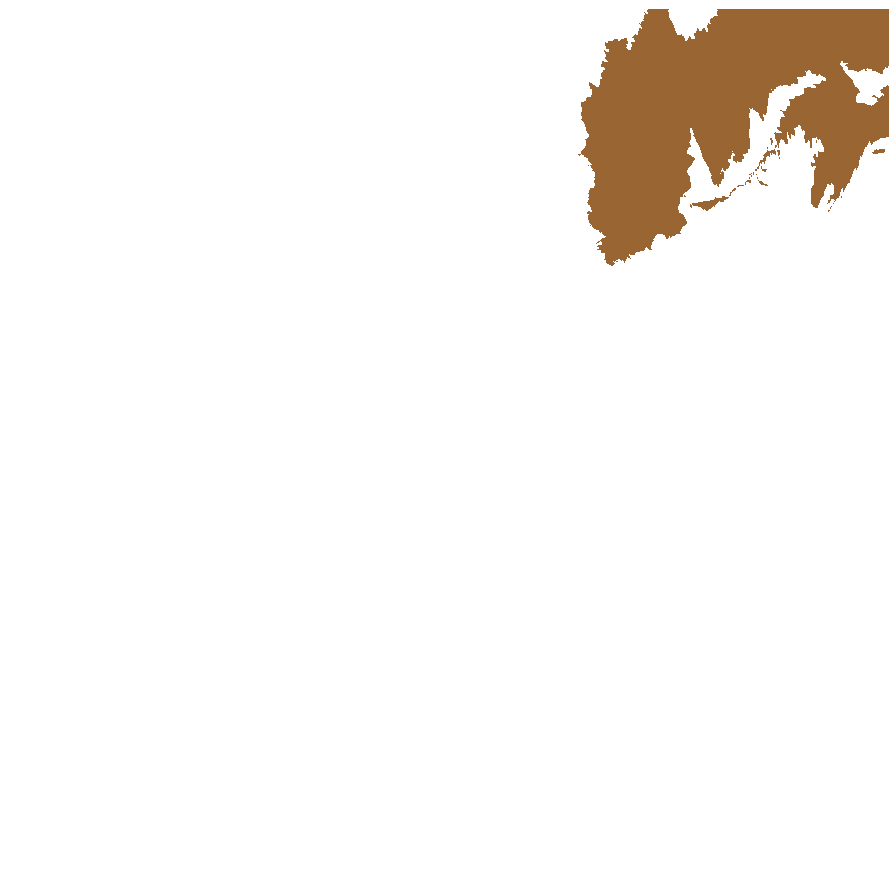
Prior names
Craspedia chrysantha, partly
Common names
Honey Buttons
Long-head Buttons
Etymology
Pycnosorus from the Greek 'pyknos' meaning dense or thick and 'soros' meaning heap, referring to the dense flowering heads of the genus. Melleus from the Latin 'melleus' meaning honey-coloured or honey-like, referring to the pale honey-yellow colour of the compound head, which is different from the darker, golden colour of other Pycnosorus species.
Distribution and status
Found in the far north-eastern corner of South Australia, growing on dry watercourses and alluvial flats. Also found in Queensland. Native. Rare in South Australia. Rare in Queensland.
Herbarium region: Lake Eyre
NRM region: South Australian Arid Lands
AVH map: SA distribution map (external link)
Plant description
Ascending or erect herb to 25 cm high with stems arising from a woody tap-root. Leaves linear to narrow-ovate to 35 mm long and 5 mm wide, decreasing in length up the stem, long hairs above and woolt hairs below. Inflorescence a cylindrical compound head, pale honey in colour, to 38 mm long and 11 mm wide, mostly more than twice as long as wide. Flowering between June and December, but probably dependent on time of rainfall. Fruits are dense pale cylindrical heads with numerous seeds. Seeds are brown ellipsoid seed to 1.5 mm long and 0.5 mm wide, covered in long white hairs. Seed embryo type is spatulate fully developed.
Seed collection and propagation
Collect seeds between July and January. Collect heads that are drying off, fluffy and turning yellow-white with hard brown seeds. Pick off whole heads or pluck off mature seeds with your fingers. Place the heads in a tray and leave to dry for one to two weeks. Then rub the heads gently by hand to dislodge the seeds. Use a sieve to separate the unwanted material. Store the seeds with a desiccant such as dried silica beads or dry rice, in an air tight container in a cool and dry place. From one collection, the seed viability was high, at 98%. Seeds are non-dormant, viable seed should germinate readily.
| Location | No. of seeds (weight grams) | Number of plants | Date collected | Collection number Collection location | Date stored | % Viability | Storage temperature |
|---|---|---|---|---|---|---|---|
| BGA | 165,400 (18.2 g) | 200+ | 26-Sep-2011 | CRD26 Lake Eyre | 1-Nov-2012 | 98% | -18°C |
| BGA | 125,000 (10.79 g) | 200+ | 7-Sep-2018 | JRG678 Lake Eyre | 24-Apr-2019 | 100% | -18°C, -80°C |
Number of plants: This is the number of plants from which the seeds were collected.
Collection location: The Herbarium of South Australia's region name.
% Viability: Percentage of filled healthy seeds determined by a cut test or x-ray.